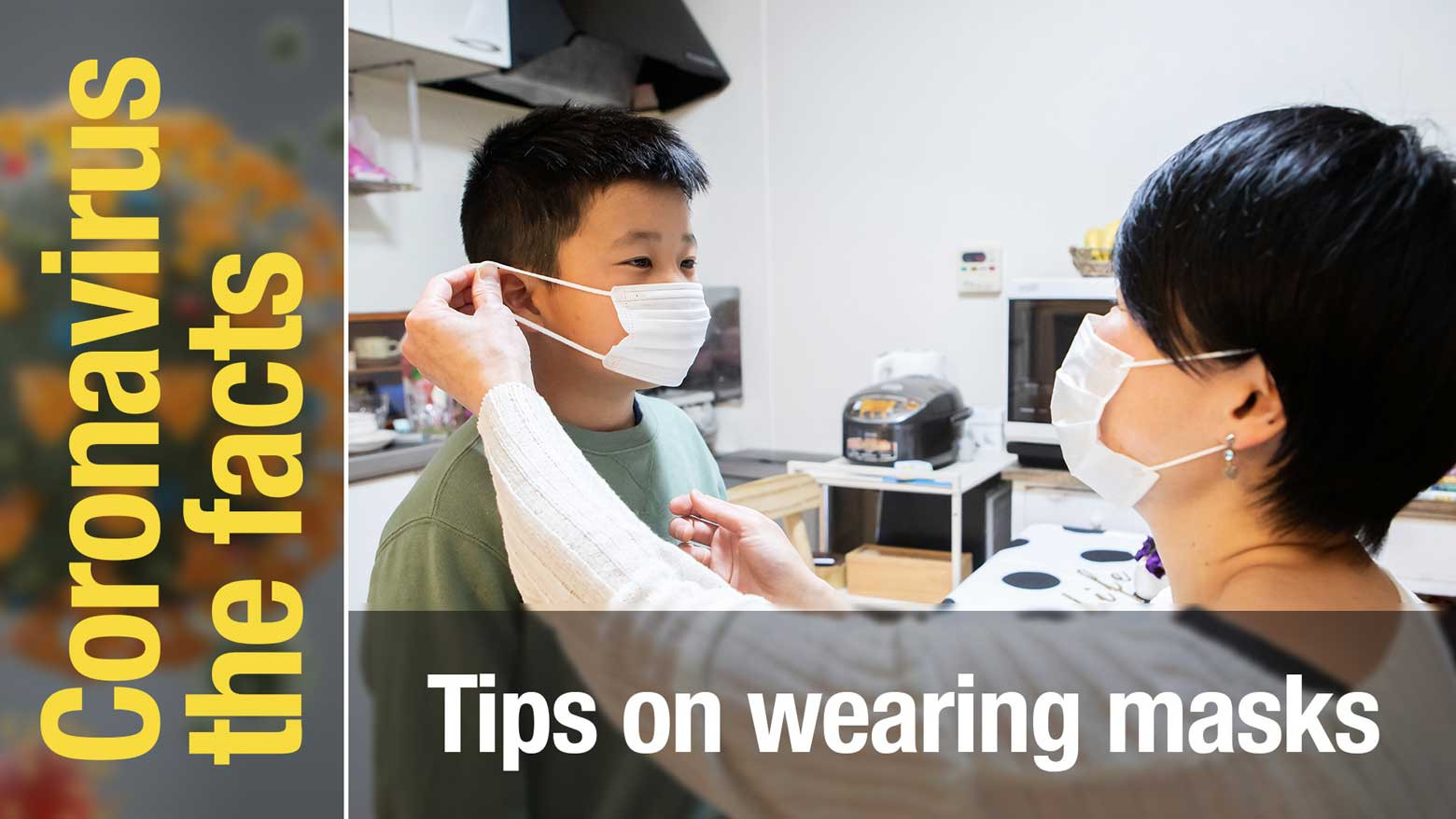This is part 37 of our coronavirus FAQ. Click here to read other installments: #Coronavirus the facts. Find the latest information and answers from experts on everything COVID-19.
Wearing masks without covering the nose increases the risk of spreading viruses if you sneeze and receiving viruses
The main purpose of wearing a mask is to prevent the spread of respiratory droplets, as well as to block large droplets emitted by an infected person. If your nose is exposed and you sneeze, droplets will be scattered. Also, 90 percent of our air intake is through the nose, meaning not covering your nose increases the risk of being infected.
Stay two meters from others when removing masks
When removing your mask, make sure there is sufficient physical distance from others. It is said that respiratory droplets can travel up to about two meters. As a measure to prevent heatstroke, Japan's health ministry recommends that we remove masks only when we are at least two meters away from other people.
To prevent heatstroke, no need to wear masks all the time
Infectious disease expert Sakamoto Fumie at St. Luke’s International Hospital in Japan says we don’t need to wear a mask all the time, but only when necessary. Sakamoto says keeping on wearing a mask can increase the risk of developing heatstroke.
Importance of appropriate mask material
The material in a mask is also important, especially in the hot months. A lot of people are making their own masks using various materials.
The World Health Organization provides information on the effectiveness of different types of mask material in terms of filtration efficiency and breathability.
Filtration efficiency means the material's ability to block droplets. The WHO says nylon provides high filtration efficiency but low breathability. Cotton gauze is easy to breathe in but has low filtration efficiency. The WHO says cotton should be combined with other materials to increase filtration efficiency.
Masks are not recommended for children under two
A group of pediatric doctors says masks should not be used on children under the age of two, due to the risk of suffocation.
Sakamoto says not just wearing masks, but taking basic preventive measures such as disinfecting your hands and avoiding the so-called "Three Cs" -- closed spaces, crowded places, and close-contact settings -- is most important.
This information is accurate as of July 7, 2020.
How do we wash cloth masks?
The key is not to scrub them too strongly. Japan's health ministry says you should first soak the cloth mask in a basin with water and detergent for about 10 minutes. The amount of detergent depends on the product, but generally you may need 0.7 grams, or about half a small spoonful, for every two liters of water. Then, wash the mask by pressing it gently with your hands, and rinse it thoroughly with just the water in the basin.
If you want to use a washing machine, put the mask in a net that is about the same size as the mask. Pat dry any excess water from the mask with a clean towel and air dry in the shade.
The ministry says it's best to wash cloth masks once a day and recommends not using them any more if they don't retain their shape.
This information is accurate as of July 6, 2020.
